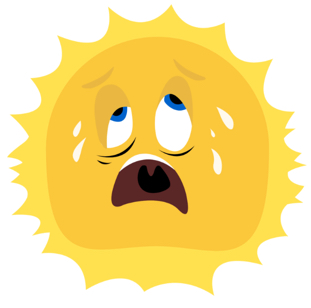
If Labels Could Pick Their Favorite City, What Would They Choose? In northern climates, summer means a time to finally enjoy the outdoors after a long winter. But, if you’re in the deep south it’s different. The oppressive heat and humidity cause many of us to hunker down inside and enjoy the air conditioning. Similarly, just as we react differently depending on the conditions, so do labels. And if they could pick their favorite city it would be San Diego, where the weather is nearly perfect all year and heat and humidity label problems are minimal!
It’s not because your label has expensive tastes. They would pick San Diego instead of other cities because your labels know they perform best when heat and humidity are moderate. 70o and 45% relative humidity are ideal. The reality is, wood derived products like the paper in label liners react to heat and humidity. So do adhesives. A label liner is likely to expand or curl in high humidity. Likewise, heat will cause an adhesive to “ooze.” A curling liner makes processing labels in a printer or applicator challenging. And, the “ooze” from an adhesive causes printer jams and may even damage the printheads. But, preventing these issues is like a day at the beach. Take these steps to eliminate heat and humidity label problems.
They Worked Fine Yesterday
During a two week stretch from May 24 to June 7, the temperature in Chicago ranged from 39o and low humidity to over 90o and high humidity. Just as people find it difficult to adjust to those variations, so do labels. Both temperature and humidity impact label performance. Even with air conditioned offices, indoor temperatures and humidity often spike during a change of seasons or an unusual weather pattern. The conditions in what seems like a climate controlled area might still be significant enough to cause a sudden problem during those weather shifts.
Labels Don’t Enjoy A Day At The Beach
The sunshine, blue skies and warm weather make a day the beach appealing. But, labels stored in a warehouse or dock area, where the average temperature typically reaches 80 - 85 with humidity levels reaching 60% and above, aren’t desirable for your labels. Use a climate controlled area inside your office area in place of label sun screen.
Just In Time Is A Bad Time
A beautiful weekend day is perfect for an impromptu picnic. But when you make that trip without bug spray it can turn fun into itchy aggravation. Likewise, taking your labels on an impromptu trip to the printer or applicator is like a picnic without the bug spray. UPS, FedEx and other freight carriers have been delivering packages timely and reliably for years. In addition, Amazon redefined our expectations for receiving products quickly after placing an order. But if you like the idea of just in time delivery or simply need a label shipment fast, don’t create problems by using your labels before acclimating them first. In proper temperature and humidity conditions, it will take a carton of labels approximately 24 - 48 hours to climatize allowing them to print and process trouble free. Taking proper precautions eliminates the need for calamine lotion and reprinting your label job.
Shorts Or A Wetsuit?
You may prefer comfortable loose fitting clothes to wearing a wetsuit on a hot summer day but labels prefer to be wrapped up tight. Label products are commonly shipped in corrugated containers and wrapped in plastic. The plastic protects the label and reduces the impact of heat and humidity. Using the plastic, and even making it more airtight, improves performance.
Fan The Stack
A breeze at the beach helps keep you cool and comfortable. Fanning the label stack will improve label processing. It releases any adhesive that may have slid out from the liner causing sheets to stick together, a common cause of printer jams.
How Low Can You Go?
On a hot day, a spot nearest the water is the most comfortable. For labels, temperature and humidity conditions are best lower to the ground. Simply storing them on lower racks or shelves will reduce potential problems.
Don’t Get Sand On Your Head
Doing a handstand at the beach gets sand in your hair. Standing roll labels on end can cause adhesive sliding. Instead, prevent processing problems by storing roll labels horizontally to help prevent adhesive settling and labels sliding on the liner. Avoiding heat and humidity label problems is like a day at the beach. Just treat your labels like they’re in San Diego to avoid the aggravations and increase your label printing productivity!
United Ad Label has an unmatched selection of stock and custom labels that are designed to work effectively in challenging environments.